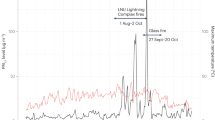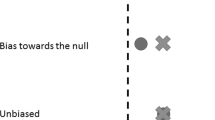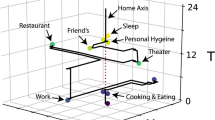Abstract
The goal of this work is to discuss a general methodology for studying associations between environmental exposures and health effect by means of the spatiotemporal random field theory. This theory is the tool of choice for rigorously accounting for important spatiotemporal variations and uncertainties related to exposures and effect. Within the framework of the random field theory, the Bayesian maximum entropy model neatly synthesizes various sources of physical and epidemiological knowledge into spatiotemporal analysis. Therefore, unlike technical statistics, this approach relies on the blending of substantive physical knowledge with powerful mathematical techniques and a coherent rationale. Given the well-founded fact that certain health effects may be caused by environmental exposures, the significance of these exposures is assessed in terms of a criterion that is based on the joint stochastic representation of exposure and health-effect distributions in space/time. In view of this criterion, the strength and consistency of the exposure–effect association are evaluated on the basis of the health-effect predictions that the combined physico-epidemiologic analysis generates in space/time. The main features of the approach are demonstrated by a simulation example and a real case study involving mortality and cold temperatures in North Carolina. The studies demonstrated the practical usefulness of the stochastic human exposure analysis in assessing the exposure–effect association. The results reported here emphasize the links between spatiotemporal models of physical systems and population health-effect distributions, thus suggesting directions for improving the current understanding of quantitative “exposure–health effect” functions.
This is a preview of subscription content, access via your institution
Access options
Subscribe to this journal
Receive 6 print issues and online access
$259.00 per year
only $43.17 per issue
Buy this article
- Purchase on Springer Link
- Instant access to full article PDF
Prices may be subject to local taxes which are calculated during checkout
Similar content being viewed by others
Author information
Authors and Affiliations
Corresponding author
Rights and permissions
About this article
Cite this article
CHRISTAKOS, G., SERRE, M. Spatiotemporal analysis of environmental exposure–health effect associations. J Expo Sci Environ Epidemiol 10, 168–187 (2000). https://doi.org/10.1038/sj.jea.7500077
Received:
Accepted:
Published:
Issue Date:
DOI: https://doi.org/10.1038/sj.jea.7500077
Keywords
This article is cited by
-
Estimating the spatial distribution of soil available trace elements by combining auxiliary soil property data through the Bayesian maximum entropy technique
Stochastic Environmental Research and Risk Assessment (2022)
-
Spatiotemporal Co-existence of Female Thyroid and Breast Cancers in Hangzhou, China
Scientific Reports (2016)
-
A GIS tool for spatiotemporal modeling under a knowledge synthesis framework
Stochastic Environmental Research and Risk Assessment (2016)
-
Thyroid cancer incidence in China between 2005 and 2009
Stochastic Environmental Research and Risk Assessment (2014)
-
Kriging and Semivariogram Deconvolution in the Presence of Irregular Geographical Units
Mathematical Geosciences (2008)



